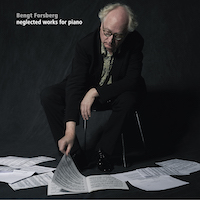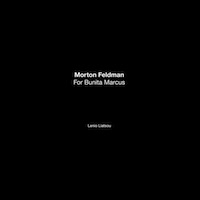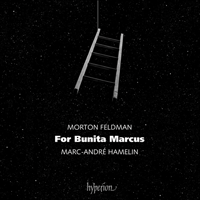Piano Factory 23.
|
Grant Chu Covell [February 2018.]
“Neglected Works for Piano.” Vitezslava KAPRÁLOVÁ: April Preludes, Op. 13 (1937). Amy BEACH: Scottish Legend, Op. 54, No. 1 (1903). Doreen CARWITHEN: Sonatina (1945-46). Valborg AULIN: Feuille d’album (1898); Valse élégiaque (1892). Ruth ALMÉN: Sonata in B minor, Op. 2 (1919). Grażyna BACEWICZ: Sonatina (1955). Germaine TAILLEFERRE: Trois Pastorales (1919, 1929, 1928). Ruth CRAWFORD SEEGER: “Andante Mystico,” No. 6 from Preludes for Piano (ca. 1920). Bengt Forsberg (pno). dB Productions dbCD170 (1 CD) (http://www.db-productions.se/). Forsberg offers a program of doubly neglected works. First off, these are all pieces by women composers, and secondly, none of them fits easily into the big styles of the late 19th or early 20th century. Half the names should be familiar; the rest are discoveries. Kaprálová studied composition with Martinů and conducting with Talich but died too early from tuberculosis at 25. The four Preludes were written in her early twenties and dedicated to Rudolf Firkušný. They are examples of a composer leveraging folk music into a dissonant or systematic language that would never be twelve-tone. Tailleferre’s 1928 Pastorale also fits into this category, although it is possible to hear the redolent, breezy harmony associated with Les Six. The three movements in Bacewicz’s Sonatina could just as easily exist as a set of three pieces (fast, slow, fast) much like Tailleferre’s three separately composed Pastorales. The longest item is Almén’s four-movement Sonata (17 minutes), sounding like Cubist Brahms because of the similarities in gesture but blunter, sometimes cumbersome harmony. The Sonata’s third movement, Tempo di minuetto, takes a Haydnesque approach to straightforward ideas but pulls them in a forlorn direction. For 1919, it’s fairly adventurous for trying to shed Romantic skin but keep its bones. Forsberg remarks that not much is known about this Swedish composer who could write unforgiving and awkwardly presented music. The most tonal pieces are Beach’s Legend which develops Scottish folk tunes using gestures Rachmaninoff would recognize. The two pieces by Aulin (brother of Tor, also a Swedish composer) could stand in for shyly modern Chopin nocturnes. Carwithen’s career was overshadowed by her marriage to William Alwyn. Labelled a Sonatina, Carwithen’s three movements are sturdy and serious, with agile rhythms and jazzy ministrations. Like Kaprálová and Bacewicz, Carwithen unites tonal motifs, familiar accompaniment patterns and repeated dissonance for color. Kaprálová and Bacewicz’s atonality often returns to a tonal harbor, but not Crawford’s Prelude which closes the collection with a dissonant atmosphere.
“Complete Piano Sonatas.” Luboš FIŠER: Piano Sonata No. 1 (1955); Piano Sonata No. 3 (1960); Piano Sonata No. 4 (1962-64); Piano Sonata No. 5 (1974); Piano Sonata No. 6, “Fras” (1978); Piano Sonata No. 7 (1985); Piano Sonata No. 8 (1995). Zuzana Šimurdová (pno). Grand Piano GP770 (1 CD) (http://www.grandpianorecords.com/). Fišer (1935-99), a Prague native, might be familiar as a film scorer, but this intégrale introduces a master whose work we should know. Sonata No. 1 was a student effort, however its three movements establish concision. No. 2 was completed in 1957, but rejected by the composer and since lost. Nos. 3, 4 and 7 are premiere recordings. The Third and the Fifth are the standouts. By 1960, Fišer commanded a compact language fully utilizing the instrument. No. 3’s opening statement combines bold chords, thundering octaves, bravura flashes, keyboard extremes, monody, ostinato moments, and traditional melody over accompaniment. It may be slightly dizzying to describe, but to the ear it is comprehensive and authoritative. Sonatas 4 through 8 are single movements containing assertive, varied motives developed in sections. The Fifth recedes with an unexpected, mildly tragic tonal conclusion. As ideas and moods shift we gradually see how they are related, and how Fišer skillfully assembles contrasts. No. 4 is dedicated to Fišer’s friend, the pianist Antonín Jemelík, and includes reference to a mutually admired piece, Scriabin’s Tenth sonata. I hear more Scriabinesque material in No. 7, as it happens. Only No. 6 has a subtitle, Fras, an old Slavonic word for devil. Nos. 7 and 8 are less prickly than the earlier sonatas, still contrasting high and low, frenetic and calm. No. 8’s variability is slightly more muted, describing a cheerless vista. It was not easy to write the music he wanted to in Czechoslovakia. Šimurdová plays excellently; this is a great release.
Morton FELDMAN: For Bunita Marcus (1985). Lenio Liatsou (pno). GOD 27 (2 LPs) (http://godrec.com/). Morton FELDMAN: For Bunita Marcus (1985). Marc-André Hamelin (pno). Hyperion CDA68048 (1 CD) (http://www.hyperion-records.co.uk/). For Bunita Marcus was written for the eponymous composer / pianist, one of Feldman’s closest friends. Among Feldman’s last keyboard works, it was written between Triadic Memories (1981) and Palais de Mari (1986). At five-quarters of an hour, it is not the longest, but it does command a wide span. From the start, it is noticeable for its repeated notes and placid surface, a triple-p dynamic with pedal held down throughout. There are sections that oscillate in an unsteady rhythm through merely three or four pitches, like doleful wind chimes. A hidden trinket is a reappearing startling arpeggio, delivered without pedal and at a louder dynamic like a lightning strike or a fish breaking the water’s surface. The last quarter hour adopts new gestures: slow chords and fewer repetitions. On Hamelin’s recording, each page is tracked separately, thus 36 tracks. Most will ignore the delineation, but others might be tempted to hit shuffle or discover favorite pages. In the booklet, track numbers and durations run sequentially across the top and bottom of several pages, like a clever afterthought. If you’re not a purist, it is too easy to create an experience at odds with Feldman’s intention. Liatsou’s release on vinyl requires two changes (three sides of two LPs are used, the fourth side is blank) for three spans. Hamelin is correct to remark that Feldman’s work operates outside of the traditional concert experience. Not just because of its length, For Bunita Marcus doesn’t fit within concert programs. Audiences have to be prepared to accept some 70-plus minutes which are “no longer about the performer, the performance, the pianistic display, the social occasion. We are now dealing purely with sound, time, and space.” Hamelin talks of the liberation of getting into the piece, which given his repertoire, represents a sea change. Perhaps he will explore the Wandelweiser composers next. Liatsou is recorded closely, the piano action audible as it shifts. Thus the instrument becomes a character in the three-sided endeavor (27:26 + 26:38 + 24:36). Liatsou takes 78:40; Hamelin is 72:23. Hamelin is expectably plush, offering Romantic Feldman played with a magnificently smooth touch. Liatsou is steelier, and the piano immediacy balances the instrument’s mechanics against the lovely but dismal pitches. In Liatsou’s reading, the startling arpeggio makes for several electric frissons, forcing a replay. It seems as if Liatsou is faster to start, perhaps she increases the optional repeats, but gains gravity towards the end. Hamelin is more consistent. He doesn’t appear faster at the close, but finds more optimism in the slow chords and notes.
[More Grant Chu Covell, Piano Factory]
[More
Almen, Aulín, Bacewicz, Beach, Carwithen, Crawford Seeger, Feldman, Fišer, Kaprálová, Tailleferre]
[Previous Article:
Used Bin Troll Tweets EE.]
[Next Article:
Snapshots: Of Crystal]
|



